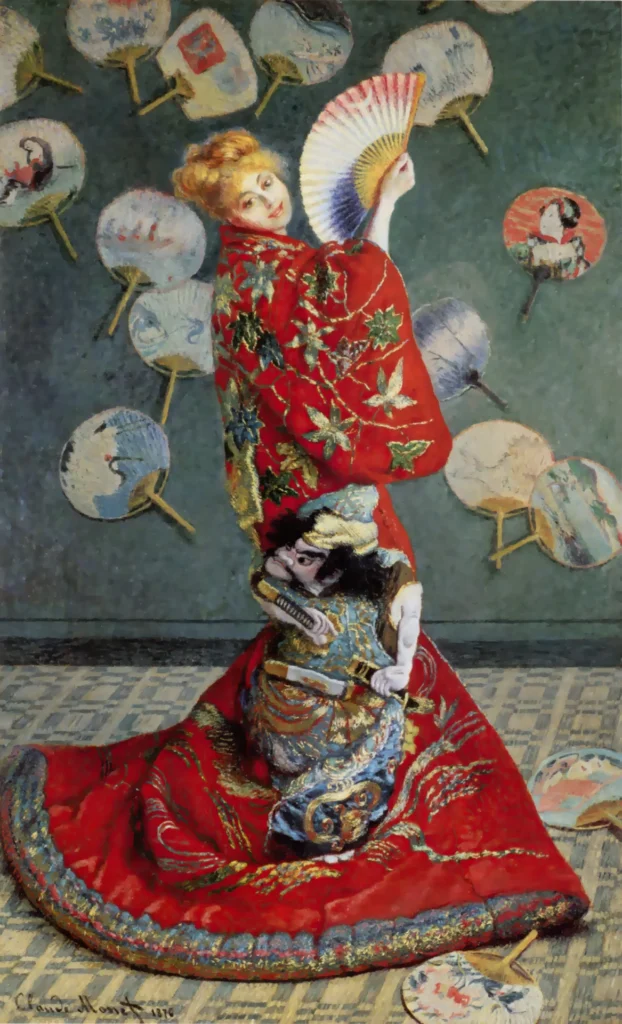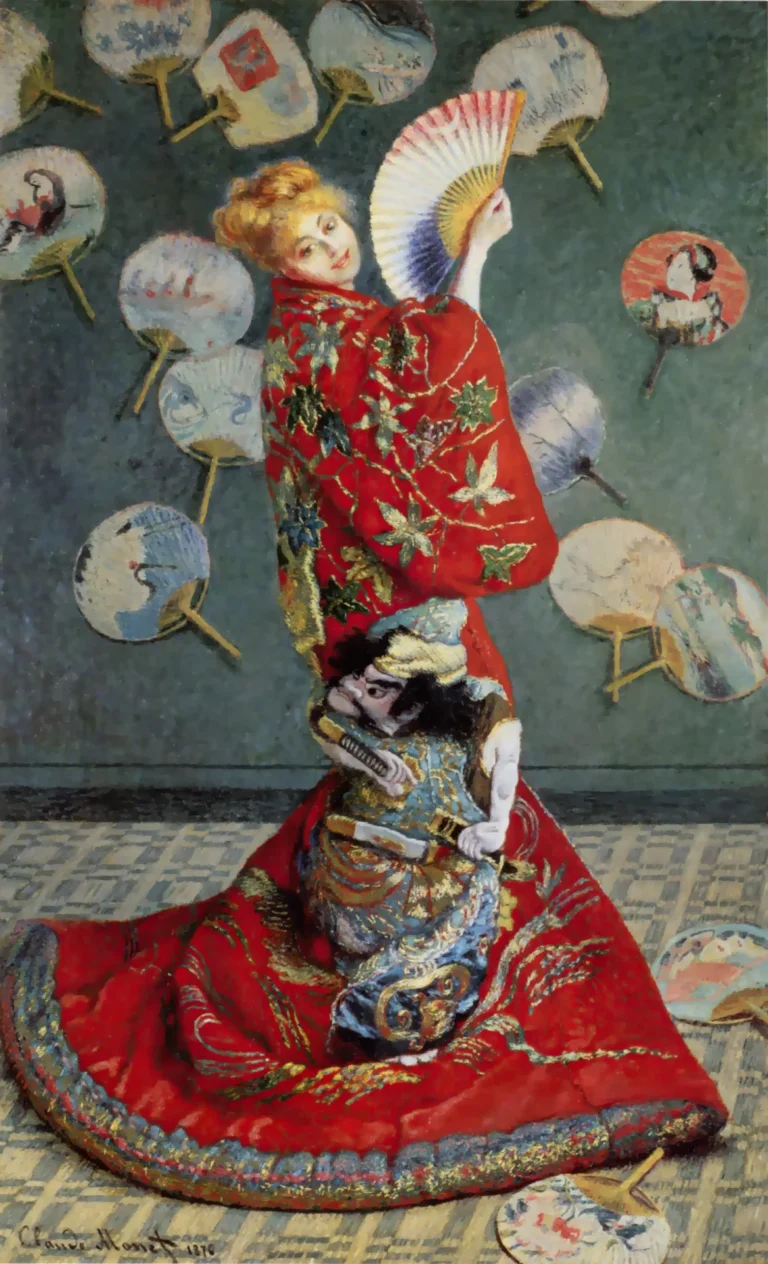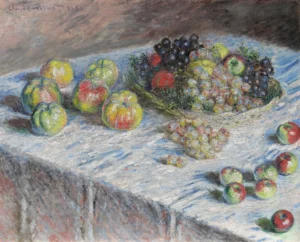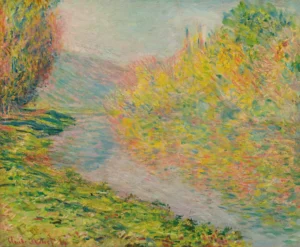Camille Monet In Japanese Costume (1876)
La Japonaise (Camille Monet in Japanese Costume) is a vibrant oil on canvas painting by Claude Monet, completed in 1876. The artwork portrays Monet's wife, Camille Doncieux, donning a traditional Japanese kimono, which symbolizes the cross-cultural fascination of the 19th century. Standing against a backdrop of Japanese decor, Camille's striking appearance merges Western and Eastern aesthetics, demonstrating Monet’s exploration of identity and cultural appropriation. Initially well-received, the painting later drew mixed critiques from the artist himself, reflecting the complex relationship between art and commercialism.
Year 1876
About the Artwork
Did You Know
Liked what you see? Add it to your collection.
Enjoyed reading? Share it.
... continued
Subject and Model
The painting features Monet's first wife, Camille Doncieux, dressed in a traditional Japanese kimono, specifically an uchikake, which belonged to a famous Japanese actor. Camille, who had dark hair, wears a blond wig to emphasize her Western identity.
Exhibition and Reception
Monet exhibited this work at the second group show of the Impressionist painters in 1876, where it garnered significant attention. The painting was part of a larger collection that included 18 other works by Monet, and it was displayed to capitalize on the popularity of Japonisme in France at the time.
Artistic Elements
The painting is notable for its large scale, measuring 231.8 cm × 142.3 cm (91 1/4 in × 56 in), and its vivid colors. Camille is depicted standing on a Japanese-style tatami mat in front of a wall decorated with Japanese uchiwa fans. The kimono she wears features detailed samurai embroidery, which contrasts with her European appearance. She holds a folding fan in the colors of the French flag, further highlighting the cultural juxtaposition.
Motivation and Critique
Monet created this painting partly due to financial necessity and to tap into the popular trend of Japonisme in the Parisian art market. However, in later years, Monet expressed dissatisfaction with the work, calling it "a piece of filth" when he learned it had sold for a good price. This criticism may suggest that he felt the painting was more of a commercial endeavor rather than a deeply personal or artistic expression.
Current Location
The painting is now part of the collection at the Museum of Fine Arts, Boston.
Historical Context
The work reflects the fascination with Japanese culture that was prevalent in Europe during the late 19th century. Monet's later works would show a deeper understanding and application of Japanese aesthetics, but "La Japonaise" remains a surface-level depiction that highlights the cultural appropriation and fascination of the time.










